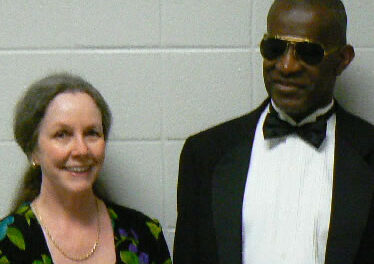Songs By Zemlinsky; Sieben Lieder (1889-90, posthumous songs), Six mélodies, Op. 13 (to poems by Maurice Maeterlinck), Walzergesänge nach toskanischen Liedern, Op. 6, Fünf Lieder (1895-96, posthumous songs), Zwei Brettl-Lieder (1901). Hermine Haselböck, mezzo-soprano, & Florian Henschel, piano. Bridge Records 9244, ©2008. 54:50. $14.99.
He never liked New York. He was short in stature, and if you passed him on the street, you might notice his most prominent feature, a Dustin Hoffman-like nose. He mistakenly held onto his early work, dreading premature judgment. But, as good fortune would have it, and as Arnold Schoenberg predicted, his work has been rediscovered. Thanks to his tenacious wife Louise, who never gave up on finding a publisher, and supporters on both sides of the Atlantic, this lesser-known composer, Alexander Zemlinsky, at last will receive the recognition he deserves.
Presenting a collection of his art songs, mezzo-soprano Hermine Haselböck and pianist Florian Henschel transport us to fin-de-siécle Vienna…. Born into a financially struggling family in 1871, Zemlinksy’s good luck began when his parents invited a family friend to lodge with them. He brought his piano. Four-year-old Alexander was smitten by the instrument and eventually won a scholarship to attend the music conservatory, where he studied piano performance and theory. In 1890, he won the annual piano competition; the prize was a Bösendorfer piano. A sensitive player, he was a sought-after accompanist, and while his career led him to conducting, composing, and teaching, his lieder remain the crown jewel of a vast body of work.
Musicologist Christoph Becher describes the lieder in his liner notes, “Messages from the Laboratory.” Succinct in nature, the art song provided Zemlinsky a small canvas on which to explore harmonic possibilities. And coming of age during one of Western Europe’s most pivotal moments, like the impressionist painters and early filmmakers, he dabbled with color. Drawing from texts of contemporary poets, he discovered a way to depart from classical structures. And while his friend, student, and rival (and, later, brother-in-law) Arnold Schoenberg received the applause as a renegade, it is Zemlinsky who provides an important link to understanding modern music. Mending the break in Ariadne’s thread, these post-Romantic songs shed light on the development of twentieth century Western musical trends.
The selections on this CD include early and middle works: Sieben Lieder (1889-90), Walzergesänge, Op. 6 (1898), and Fünf Lieder (1895-96). Influenced by Brahms, they are rich in detail. Featuring dramatic changes in melodic motion and expressive harmonic language, they capture the emotional character of the text. Penned during his middle period, the components of Sechs Gesänge (to poems by Maurice Maeterlinck, 1910-14) are, according to biographer Antony Beaumont,* Zemlinsky’s “finest” [vocal] work. A 1911 Nobel Laureate, Maeterlinck was an intellectual and representative of the symbolist movement. The texts are sensually allusive crafted into irregular verses, providing the perfect platform for new music.
Haselböck and Henschel’s splendid performances bring to life this unusually beautiful hour of music. From the delicate “Die schlanke Wasserlilie” (“The slender water lily,” text by Heinrich Heine) to the steamy “Briefchen schrieb ich” (“My love letters,” text by Gregorovius), Haselböck captures every nuance. One shining moment after the other, she sings with the agility of a gazelle. Awarded the Radio Österreich 1 Pasticcio Prize for this CD, Hermine Haselbock also wins this listener’s heart and admiration. Florian Henschel’s piano collaboration is equally deft. His skillful rubato in “Liebe Schwalbe” (“Little swallow,” text by Gregorovius). and his unassuming attention to detail, reflect Zemlinsky’s magnificent talent. An after dinner cognac, Zwei Brettl-Lieder (Two Cabaret Songs, 1901) are the perfect finish. I closed my eyes and smiled.
*Antony Beaumont: Zemlinsky. Cornell University Press, 2000.











